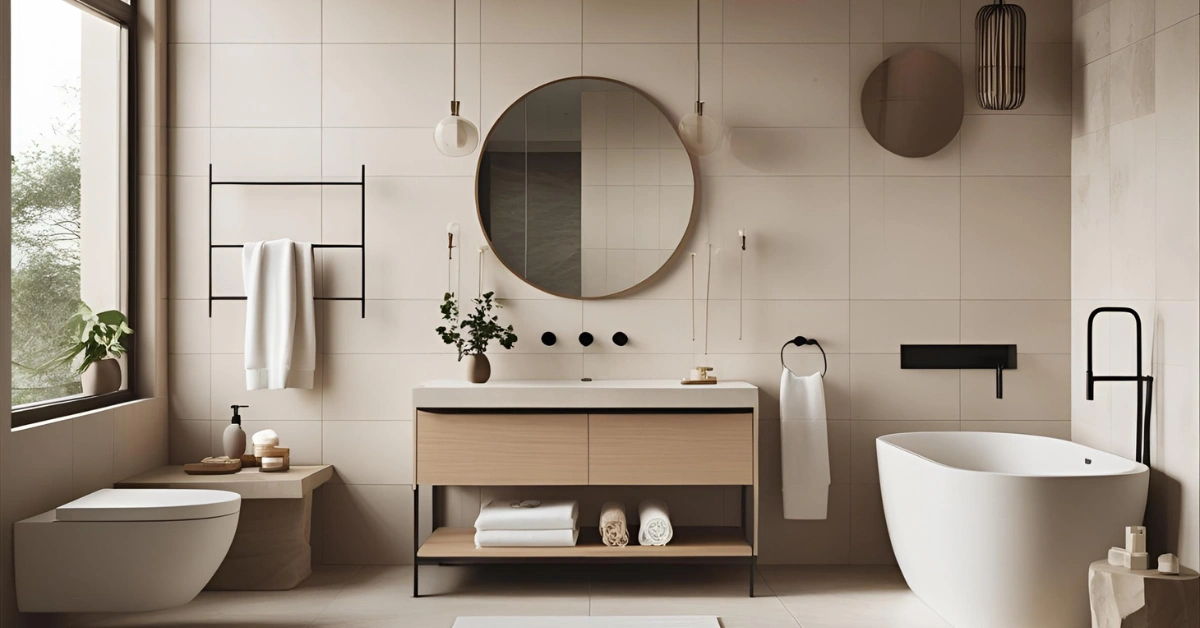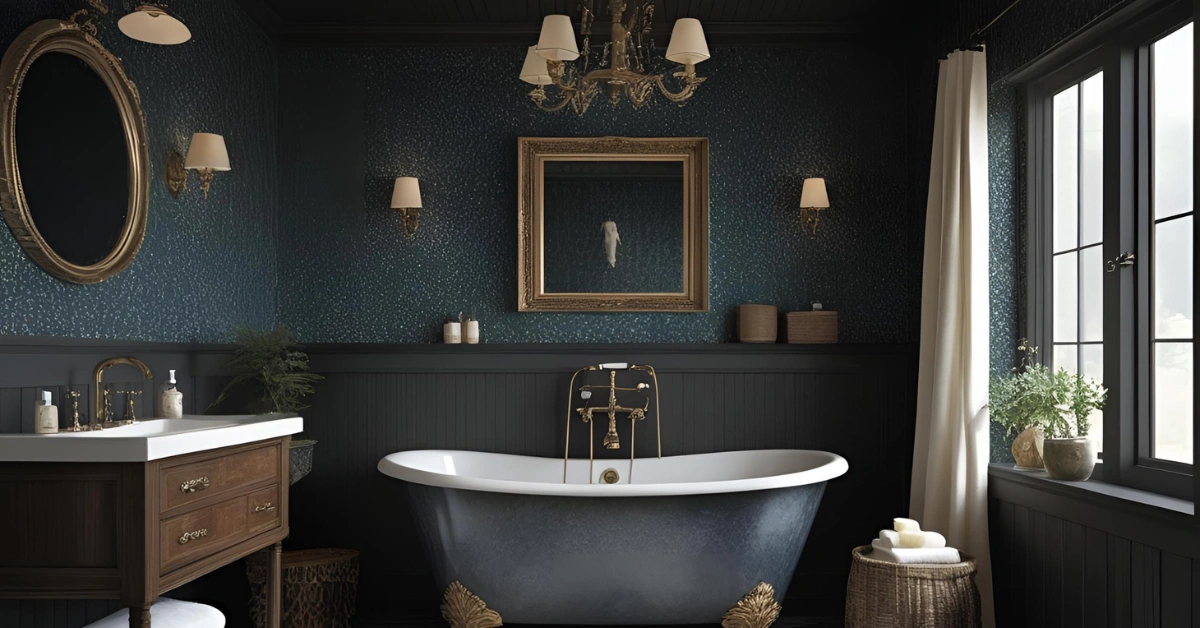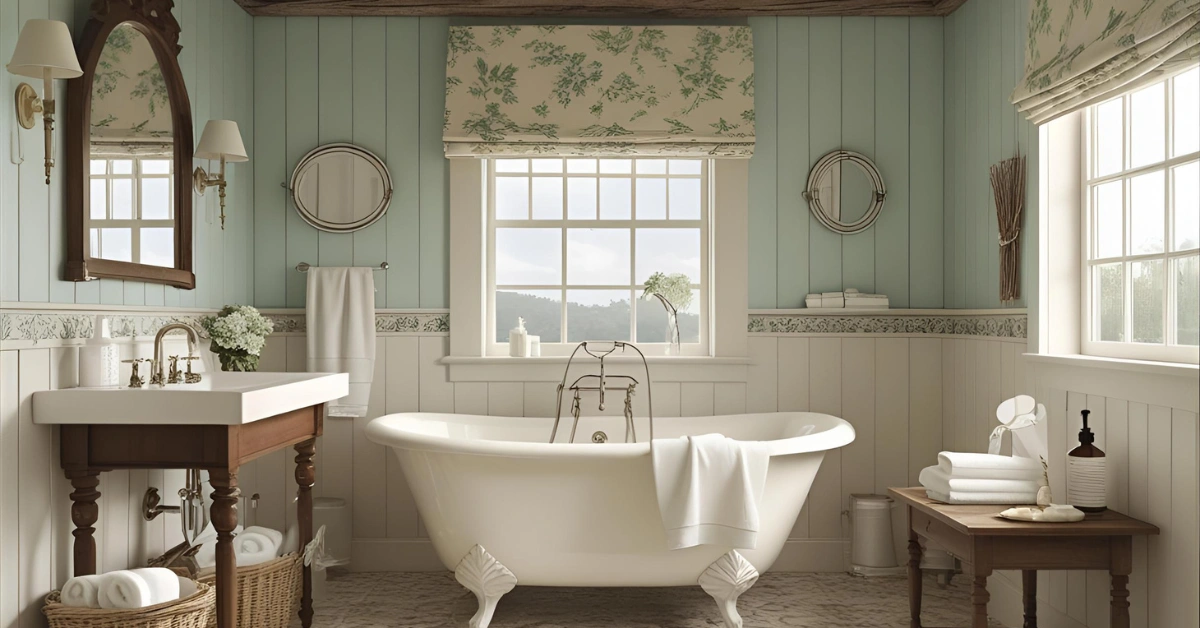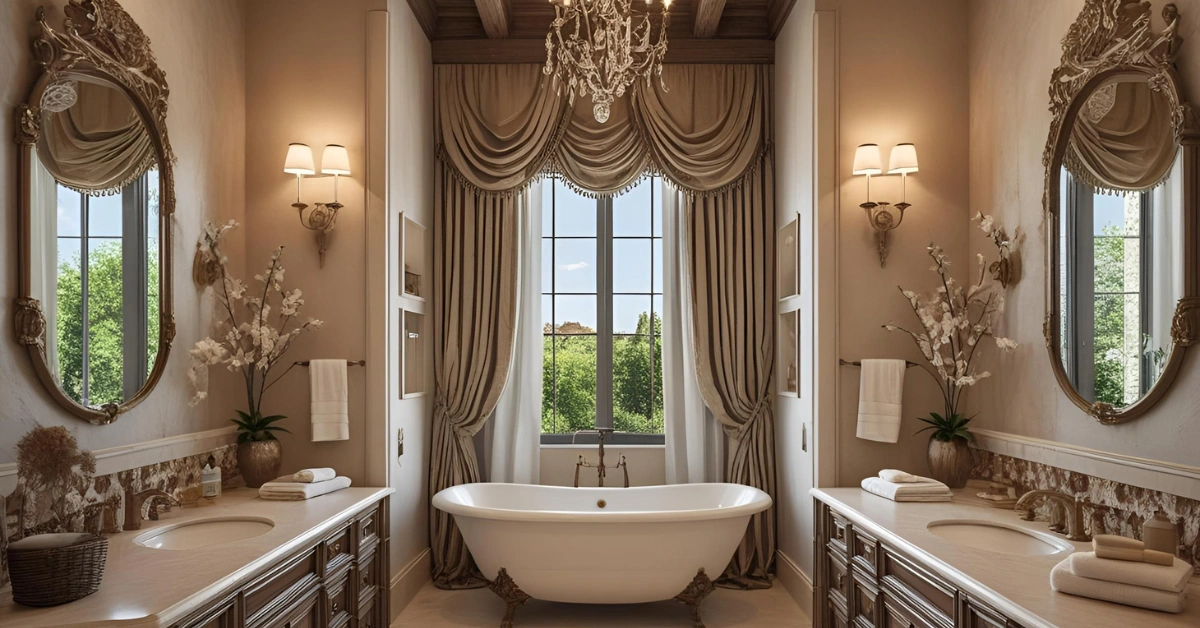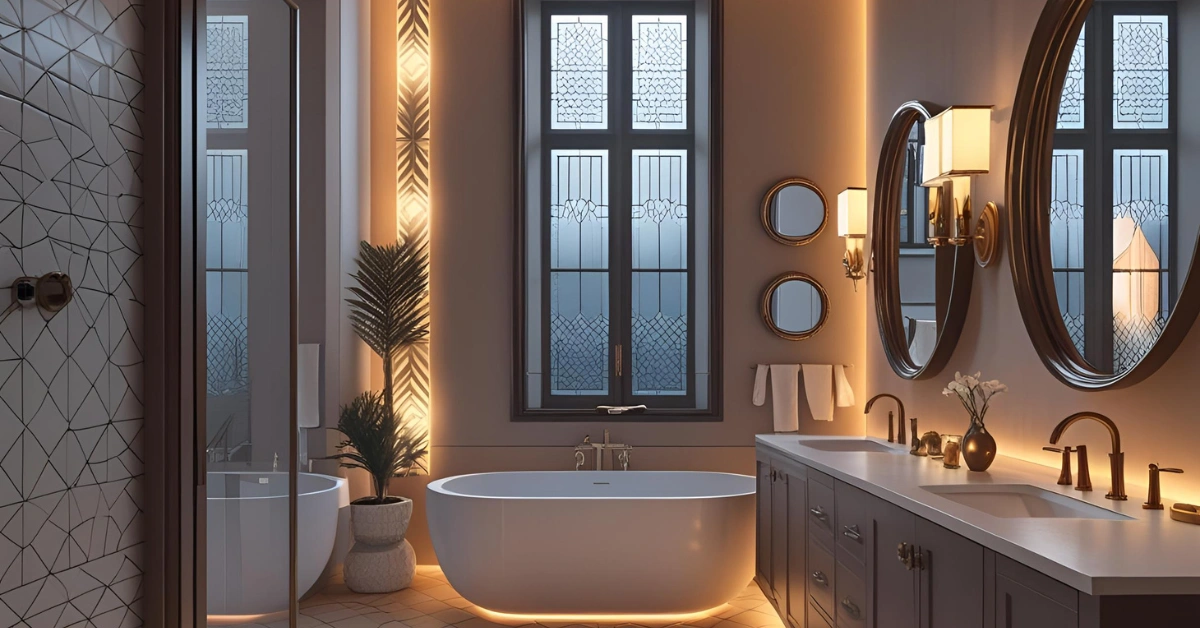15 Stunning Moroccan Bathroom Design Ideas
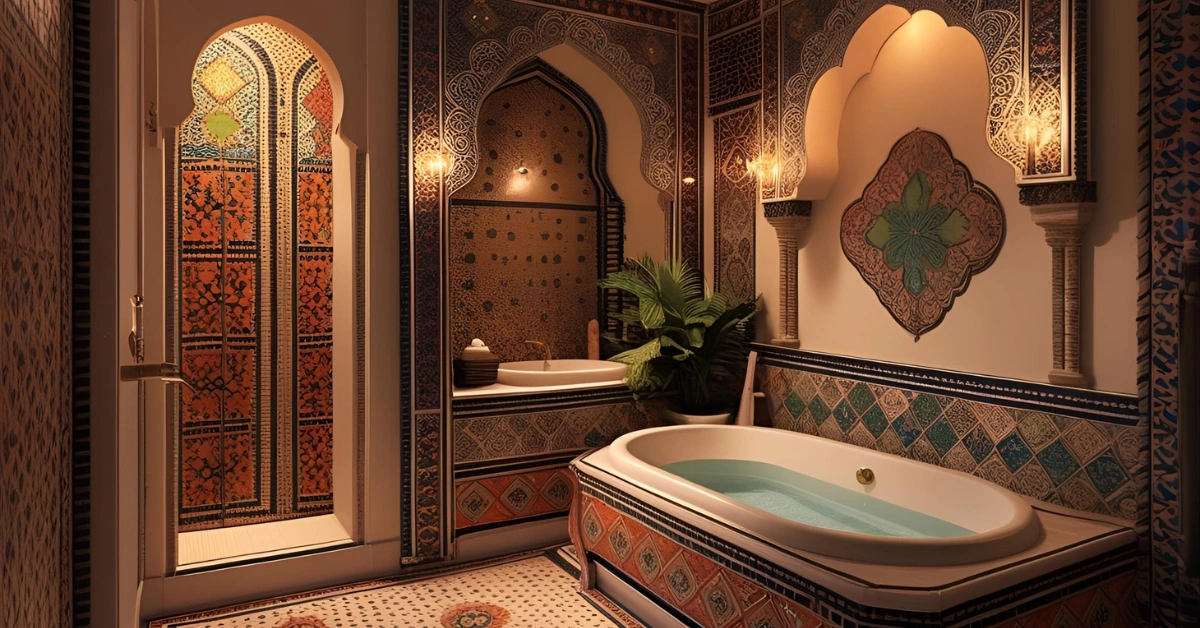
Are you tired of a dull, uninspiring bathroom that feels more functional than fabulous? Many homeowners struggle to turn their bathrooms into a sanctuary that reflects personality and style. Enter Moroccan bathroom design a style that blends rich colors, intricate patterns, and luxurious textures to create a spa-like retreat in your home. This guide offers practical tips, creative ideas, and expert insights to help you craft a stunning Moroccan-inspired bathroom that’s both timeless and functional, satisfying your desire for beauty and relaxation.
With its roots in North African artistry, Moroccan design transforms ordinary spaces into exotic havens. By incorporating vibrant tiles, ornate fixtures, and warm lighting, you can create a bathroom that feels like a luxurious escape. Whether you’re planning a full renovation or a simple refresh, this 3,000-word guide will walk you through every step to achieve a breathtaking Moroccan bathroom design that’s uniquely yours.

What Is Moroccan Bathroom Design?
Moroccan bathroom design draws inspiration from Morocco’s rich cultural heritage, blending influences from Berber, Islamic, and Andalusian traditions. This style is known for its bold use of color, intricate tilework, and architectural details like arches and lanterns. According to Architectural Digest, Moroccan design emphasizes craftsmanship and sensory experiences, making it ideal for creating a warm, inviting bathroom.
The key to this aesthetic is balance combining vibrant elements with calming neutrals to create a harmonious space. Think handcrafted zellige tiles, carved wooden accents, and soft, ambient lighting. Whether you lean toward a maximalist or minimalist approach, Moroccan design offers endless possibilities to elevate your bathroom.

Why Choose Moroccan Bathroom Design?
Timeless Appeal
Moroccan design is evergreen, blending historical craftsmanship with modern versatility. Its intricate patterns and warm tones never go out of style, making it a smart choice for long-term value.

Sensory Experience
The tactile textures of zellige tiles, plush towels, and metallic accents engage the senses, turning your bathroom into a spa-like retreat. As interior designer Amina El Kabbaj notes, “Moroccan design invites you to slow down and savor the moment.”
Customization
From bold, colorful designs to subtle, neutral palettes, Moroccan style adapts to any taste. You can go all-in with vibrant mosaics or keep it understated with earthy tones and minimal accents.
Key Elements of Moroccan Bathroom Design
To create an authentic Moroccan bathroom, focus on these core elements. Each adds a layer of beauty and functionality to your space.
1. Zellige Tiles: The Heart of Moroccan Design
Zellige tiles are handmade, glazed terracotta tiles known for their irregular shapes and vibrant colors. These tiles, often arranged in geometric patterns, are a hallmark of Moroccan bathroom design. According to Dwell, their imperfections add character, making each tile unique.

- Tip: Use zellige tiles for a statement wall, shower, or floor. Opt for jewel tones like emerald, sapphire, or ruby for drama, or stick with whites and creams for a serene look.
- Example: In a recent project, a homeowner used turquoise zellige tiles for a shower accent wall, paired with neutral grout to let the tiles shine.
2. Arches and Curves
Moroccan architecture often features graceful arches and curved niches. These elements soften the bathroom’s lines and add an elegant touch.

- Tip: Incorporate an arched mirror or a curved alcove for storage. If renovating, consider an arched doorway or shower entrance for authenticity.
- Cost-Saving Hack: Use peel-and-stick arch decals for a budget-friendly way to mimic this look.
3. Warm, Ambient Lighting
Moroccan lanterns, often made of brass or wrought iron, cast intricate shadows that enhance the mood. Pendant lights or sconces with filigree designs create a magical glow.

- Tip: Hang a statement lantern above the bathtub or place sconces near the vanity. Use warm LED bulbs (2700K–3000K) for a cozy feel.
- Safety Note: Ensure all lighting is rated for bathroom use to prevent moisture damage.
4. Rich Color Palettes
Moroccan bathrooms embrace bold colors like cobalt blue, saffron yellow, and terracotta, balanced with neutrals like ivory or sand. These hues evoke the vibrancy of Moroccan souks.

- Tip: Paint an accent wall in a deep jewel tone or use colorful textiles like rugs and towels. For a minimalist look, stick to earthy tones with pops of color in accessories.
- Example: A small bathroom in a Marrakech-inspired home used terracotta walls with white zellige tiles, creating a warm yet airy feel.
5. Textured Accessories
Textures like carved wood, woven baskets, and plush rugs add depth. Moroccan poufs or handwoven towels bring authenticity and comfort.

- Tip: Add a carved wooden mirror frame or a woven basket for storage. These small touches enhance the tactile experience without overwhelming the space.
Step-by-Step Guide to Designing Your Moroccan Bathroom
Ready to transform your bathroom? Follow these steps to create a cohesive Moroccan bathroom design that’s both stunning and practical.
Step 1: Plan Your Layout
Before diving into aesthetics, assess your bathroom’s size and layout. Moroccan design works in both small and large spaces, but planning is key.

- Small Bathrooms: Focus on a single statement element, like a zellige tile backsplash or an arched mirror, to avoid clutter.
- Large Bathrooms: Incorporate multiple features, such as a freestanding tub, a double vanity with intricate tiles, and a statement chandelier.
- Tip: Use a mood board to visualize colors, textures, and fixtures before purchasing.
Step 2: Choose Your Color Scheme
Select a palette that reflects your style. Popular Moroccan combinations include:

| Color Scheme | Primary Colors | Accent Colors | Best For |
|---|---|---|---|
| Jewel Tones | Cobalt, Emerald | Gold, Ivory | Bold, luxurious spaces |
| Earthy Neutrals | Terracotta, Sand | Olive, Cream | Calming, minimalist vibes |
| Monochrome | White, Cream | Black, Silver | Modern, sleek designs |
- Tip: Test paint samples on a small wall section to see how they look under your bathroom’s lighting.
Step 3: Select Tiles and Materials
Tiles are the backbone of Moroccan bathroom design. Beyond zellige, consider cement tiles with bold geometric patterns or encaustic tiles for a modern twist.

- Budget Tip: Use expensive zellige tiles sparingly (e.g., for a vanity backsplash) and complement them with affordable ceramic tiles in similar colors.
- Sourcing: Check retailers like Moroccan Tile & Stone or Artisan Tile Shop for authentic options.
Step 4: Add Architectural Details
Incorporate arches, niches, or stucco walls for an authentic Moroccan feel. If structural changes aren’t feasible, use decor to mimic these elements.
- Example: A homeowner added a faux arch above their vanity using a curved mirror and decorative molding, saving thousands on construction.
Step 5: Layer Lighting and Accessories
Combine ambient, task, and accent lighting for functionality and ambiance. Add Moroccan-inspired accessories like brass faucets, patterned rugs, or ceramic soap dishes.

- Tip: Shop local artisan markets or online platforms like Etsy for handmade Moroccan decor to support small businesses.
Moroccan Bathroom Design Ideas for Every Budget
Whether you’re working with a tight budget or splurging on a luxury renovation, here are tailored ideas to inspire your Moroccan bathroom design.
Budget-Friendly Moroccan Bathroom ($500–$2,000)
- Tiles: Use affordable ceramic tiles with Moroccan-inspired patterns. Paint existing tiles with tile-specific paint for a quick refresh.
- Accessories: Add a Moroccan rug, a brass mirror, and woven baskets for storage.
- Lighting: Install plug-in wall sconces instead of hardwired fixtures to save on electrician costs.
- Example: A renter transformed their bathroom for $800 by painting the walls terracotta, adding a zellige-inspired shower curtain, and hanging a thrifted brass lantern.

Mid-Range Moroccan Bathroom ($2,000–$10,000)
- Tiles: Invest in authentic zellige tiles for a shower or accent wall, paired with budget-friendly flooring.
- Fixtures: Upgrade to brass or copper faucets and a freestanding vanity with carved details.
- Lighting: Install a statement chandelier or pendant light for drama.
- Example: A couple revamped their guest bathroom with a zellige tile backsplash, a wooden vanity, and a Moroccan lantern for $5,000, creating a spa-like retreat.

Luxury Moroccan Bathroom ($10,000+)
- Tiles: Cover walls and floors in handcrafted zellige or cement tiles. Add a mosaic mural for a focal point.
- Fixtures: Install a freestanding soaking tub, a double vanity with marble countertops, and high-end brass fixtures.
- Architectural Features: Add arched niches, a walk-in shower with a curved entrance, or a skylight for natural light.
- Example: A luxury home in California featured a Moroccan-inspired master bathroom with a custom zellige mural, a clawfoot tub, and a brass chandelier, costing $25,000 but adding significant home value.

Common Mistakes to Avoid in Moroccan Bathroom Design
Even with the best intentions, it’s easy to make mistakes that disrupt the harmony of your design. Here’s what to watch out for:
- Overloading with Patterns: Too many bold tiles or textiles can feel chaotic. Stick to one or two statement patterns and balance with neutrals.
- Ignoring Functionality: Ensure your design prioritizes practical elements like storage and water-resistant materials.
- Poor Lighting Choices: Avoid harsh, cool-toned lights that clash with the warm Moroccan aesthetic. Opt for soft, warm lighting instead.
- Skipping Maintenance Considerations: Zellige tiles require sealing to prevent water damage. Factor in upkeep when choosing materials.
Expert Tips for a Flawless Moroccan Bathroom
Interior designer Fatima Zahra, who specializes in Moroccan-inspired spaces, shares these insights:
- “Mix old and new. Pair a modern vanity with traditional zellige tiles to create a timeless look.”
- “Don’t shy away from bold colors, but use them strategically. A single cobalt blue wall can transform the entire space.”
- “Invest in quality craftsmanship. Handmade tiles or fixtures add authenticity that mass-produced items can’t match.”

For a personal touch, I once helped a friend refresh their bathroom with a Moroccan vibe on a $1,000 budget. We used peel-and-stick zellige-style tiles, a thrifted brass mirror, and a vibrant rug from a local market. The result? A cozy, inviting space that felt like a mini-vacation every day.
How to Maintain Your Moroccan Bathroom
To keep your Moroccan bathroom design looking pristine, follow these maintenance tips:
- Seal Tiles Regularly: Zellige and cement tiles need sealing every 1–2 years to prevent water damage. Use a high-quality penetrating sealer.
- Clean with Care: Avoid harsh chemicals on natural materials like brass or wood. Use mild soap and water for most surfaces.
- Check for Moisture: Ensure proper ventilation to prevent mold, especially in humid climates. A dehumidifier or exhaust fan can help.
- Refresh Textiles: Wash rugs and towels regularly to maintain their vibrancy and prevent wear.

Moroccan Bathroom Design Trends for 2025
As we move into 2025, Moroccan design continues to evolve. Here are the top trends to watch:
- Sustainable Materials: Eco-friendly tiles made from recycled materials are gaining popularity, aligning with Morocco’s artisanal ethos.
- Monochrome Moroccan: Minimalist designs with white or black zellige tiles offer a modern take on the classic style.
- Mixed Metals: Combining brass, copper, and silver accents adds a contemporary edge to traditional Moroccan design.
- Bold Murals: Large-scale tile murals depicting Moroccan landscapes or patterns are becoming statement pieces in luxury bathrooms.

Conclusion: Create Your Dream Moroccan Bathroom Today
Moroccan bathroom design offers a perfect blend of luxury, culture, and functionality, making it an ideal choice for homeowners seeking a unique and timeless space. By incorporating elements like zellige tiles, arched features, and warm lighting, you can transform your bathroom into a personal oasis that inspires relaxation and creativity. Whether you’re working with a modest budget or designing a high-end retreat, the tips and ideas in this guide will help you achieve a stunning result.
Ready to start your Moroccan bathroom journey? Begin by creating a mood board, sourcing authentic materials, and consulting with a local designer to bring your vision to life. Share your dream design in the comments or contact a professional to make it a reality!

